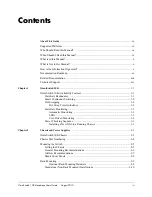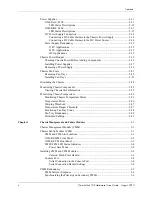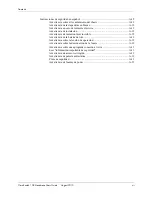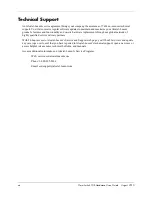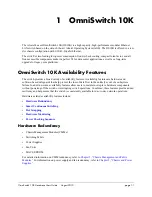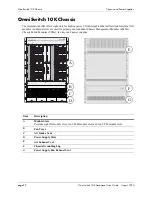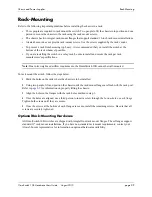
OmniSwitch 10K
OmniSwitch 10K Availability Features
OmniSwitch 10K Hardware Users Guide
August 2015
page 1-3
Note.
Network Interface (NI) modules can only be hot swapped with like modules. For example, a
OS10K-GNI-C48E
must be hot swapped with another OS10K-GNI-C48E module and cannot be hot
swapped with any other module type. Refer to product release notes for additional guidelines on hot
swapping Network Interface (NI) modules.
Hardware Monitoring
Automatic Monitoring
Automatic monitoring refers to the switch’s built-in sensors that automatically monitor operations. The
majority of automatic monitoring is provided by the CMM. If an error is detected (e.g., over-threshold
temperature), the CMM immediately sends a trap to the user. The trap is displayed on the console in the
form of a text error message. (In the case of an over-threshold temperature condition, the CMM displays
an amber TEMP LED in addition to sending a trap.)
LEDs
LEDs, which provide visual status information, are provided on the CMM, NI, and power supply front
panels. LEDs are used to indicate conditions, such as hardware and software status, temperature errors,
link integrity, data flow, etc. For detailed LED descriptions, refer to the corresponding hardware
component chapter (e.g., “Network Interface (NI) Modules”).
User-Driven Monitoring
User-driven hardware monitoring refers to CLI commands that are entered by the user in order to access
the current status of hardware components. The user enters “show” commands that output information to
the console. Show commands for all the features are detailed in the
OmniSwitch CLI Reference Guide
.
Power Checking Sequence
The power checking sequence is another built-in availability feature. This feature helps regulate power in
the switch whenever the switch is booted or an NI module is installed in the chassis.
The sequence is a joint effort between the CMM, the NI modules, and the power supplies. During the boot
sequence, the primary CMM automatically compares the power consumption required by installed NIs
with the power available from the power supplies. If there is not adequate power to support all NIs, the
CMM will power on only the supported number of NIs, starting from the first NI slot position.
Important.
During the power checking sequence, CMMs receive priority and are always powered on. NI
modules are then powered on sequentially by slot position. I.e., the NI in slot 1 is powered on, then slot 2,
then slot 3, etc. For information on slot positions, refer to
Chapter 2, “Chassis and Power Supplies.”
Installing a New NI into a Running Chassis
When an NI module is installed in the chassis, only a small portion of the circuitry is initially powered up.
The CMM immediately reads the incoming module’s ID and determines how much power the module will
require. If the number of power supplies installed in the chassis can provide sufficient power, the CMM
turns on the incoming module. If the number of installed power supplies cannot provide sufficient power,
the incoming NI will remain powered off.
Содержание OmniSwitch 10K
Страница 1: ...Part No 060310 10 Rev H August 2015 OmniSwitch 10K Hardware Users Guide enterprise alcatel lucent com ...
Страница 8: ...Contents viii OmniSwitch 10K Hardware Users Guide August 2015 ...
Страница 18: ...OmniSwitch 10K Availability Features OmniSwitch 10K page 1 4 OmniSwitch 10K Hardware Users Guide August 2015 ...
Страница 64: ...Pinouts Chassis Management and Fabric Modules page 3 16 OmniSwitch 10K Hardware Users Guide August 2015 ...

